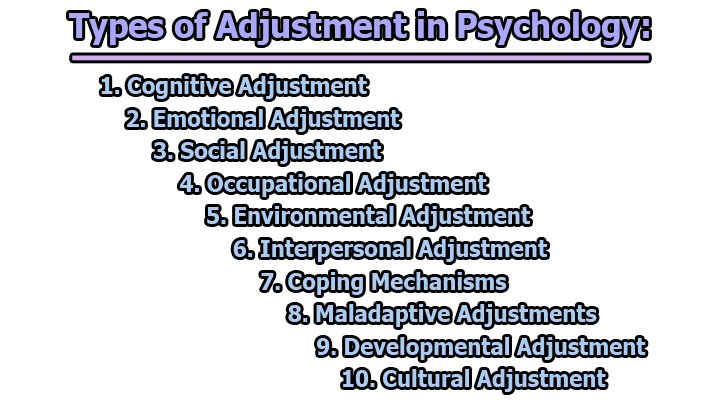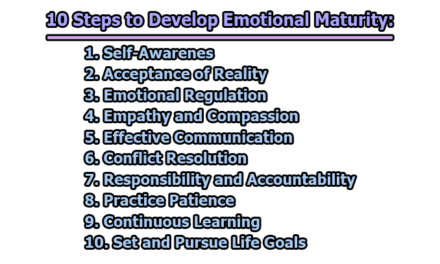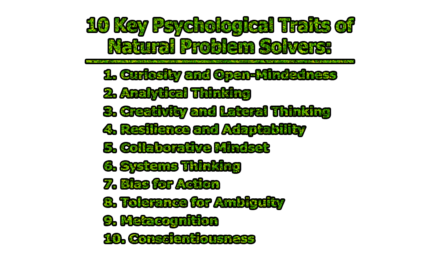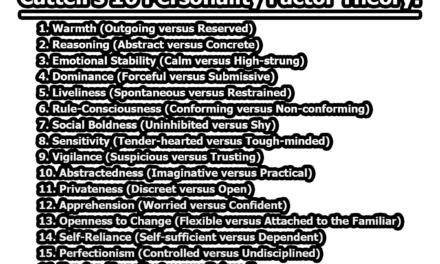Elements and Types of Adjustment in Psychology:
The field of psychology intricately explores the human experience, and at its core lies the concept of adjustment—a dynamic process through which individuals navigate the complexities of life. Understanding the elements and types of adjustment is paramount in unraveling the intricate tapestry of human behavior and mental well-being. From emotional maturity and the satisfaction of needs to the geographical atmosphere in which individuals reside, these elements serve as foundational pillars for healthy psychological adaptation. Similarly, delving into various types of adjustment, including cognitive, emotional, social, and occupational, provides a comprehensive understanding of how individuals cope with challenges and strive for a harmonious balance in their lives. In this exploration, we will explore the elements and types of adjustment in psychology that shape the human experience.
Elements of Adjustment in Psychology:
There are certain prime elements for the fulfilment of needs necessary for the healthy adjustment of a person. They are as follows:
1. Emotional Maturity: Emotional maturity is a cornerstone of effective adjustment. It involves the ability to recognize, understand, and manage one’s own emotions, as well as comprehend and respond appropriately to the emotions of others. Emotionally mature individuals can navigate challenging situations with resilience and maintain stable mental well-being. This element of adjustment is crucial in promoting healthy relationships, managing stress, and fostering a positive outlook on life.
Emotional maturity is cultivated through self-awareness, introspection, and the development of coping mechanisms. Psychotherapy, self-reflection, and mindfulness practices are often employed to enhance emotional maturity, allowing individuals to respond to life’s challenges in a balanced and adaptive manner.
2. Satisfaction of Needs: Fulfillment of basic needs is fundamental to a person’s psychological well-being and adjustment. Drawing from Abraham Maslow’s hierarchy of needs, individuals must have their physiological needs (such as food, water, and shelter) met before addressing higher-order needs like safety, love and belonging, esteem, and self-actualization. Satisfaction of these needs provides a sense of security and stability, laying the foundation for healthy adjustment.
Psychologists and social workers often work collaboratively to address the needs of individuals facing economic challenges, homelessness, or other circumstances hindering basic need satisfaction. Community support, access to resources, and social welfare programs contribute significantly to meeting these fundamental needs.
3. No Obstacle in Achieving Needs: The absence of obstacles in the pursuit of needs is crucial for effective adjustment. Obstacles can take various forms, including societal barriers, discrimination, or personal challenges that impede progress. Overcoming these obstacles requires resilience, problem-solving skills, and sometimes external support.
Psychologists often work with individuals to identify and address obstacles, employing therapeutic techniques to build coping strategies and enhance problem-solving abilities. Additionally, advocacy for social justice and equality plays a role in creating an environment where individuals face fewer systemic obstacles in their pursuit of needs.
4. Strong Motives in Realizing Needs: Motivation is a driving force in the pursuit of needs and, consequently, in the process of adjustment. Individuals with strong internal and external motives are more likely to overcome challenges, persist in their efforts, and adapt successfully to changing circumstances. Motivational factors can include personal aspirations, social connections, and a sense of purpose.
Psychologists utilize motivational interviewing techniques and cognitive-behavioral approaches to enhance an individual’s intrinsic motivation. By exploring and understanding the underlying motives, therapists can assist individuals in aligning their goals with their values and fostering a sense of purpose.
5. Feasible Geographical Atmosphere to Fulfill Needs: The geographical atmosphere in which an individual resides significantly impacts their ability to fulfill needs. This encompasses factors such as access to resources, economic opportunities, and the overall quality of the environment. A feasible geographical atmosphere provides a supportive backdrop for individuals to meet their needs and engage in the community.
Urban planning, community development initiatives, and social policies play crucial roles in shaping the geographical atmosphere. Creating environments that facilitate access to education, employment, healthcare, and recreational activities enhances the overall well-being of individuals, contributing to their successful adjustment.
Types of Adjustment in Psychology:
Psychologists often explore different types of adjustment to gain insights into human behavior, mental health, and overall well-being. Some of the necessary types of adjustment in psychology are being;
1. Cognitive Adjustment: Cognitive adjustment refers to the way individuals mentally process and interpret their experiences, thoughts, and emotions. It involves adapting one’s cognitive processes to effectively navigate challenges and make sense of the world. Cognitive adjustment can manifest in various ways, such as problem-solving skills, critical thinking, and the ability to manage stress through positive thinking. For instance, individuals with strong cognitive adjustment skills are better equipped to reframe negative situations, leading to improved mental well-being.
2. Emotional Adjustment: Emotional adjustment encompasses an individual’s ability to manage and regulate their emotions in response to different situations. It involves recognizing and understanding emotions, as well as developing coping mechanisms to deal with emotional challenges. Effective emotional adjustment contributes to mental resilience and can positively impact interpersonal relationships. On the contrary, poor emotional adjustment may lead to mood disorders, anxiety, and other mental health issues.
3. Social Adjustment: Social adjustment refers to the ability of an individual to function effectively in social settings, including relationships, friendships, and group dynamics. Successful social adjustment involves developing appropriate communication skills, empathy, and the ability to form and maintain healthy connections with others. Social adjustment is crucial for overall well-being, as positive social interactions contribute to a sense of belonging and support.
4. Occupational Adjustment: Occupational adjustment centers around an individual’s ability to adapt and thrive in the workplace. It involves acquiring and applying the necessary skills, adapting to the work environment, and finding satisfaction and fulfillment in one’s professional life. Successful occupational adjustment is closely linked to career satisfaction and can impact overall life satisfaction. Individuals experiencing challenges in this area may face work-related stress, burnout, or dissatisfaction with their chosen profession.
5. Environmental Adjustment: Environmental adjustment pertains to an individual’s ability to adapt to their physical surroundings, including their living conditions and broader community or cultural context. It involves navigating changes in the environment, such as relocation or cultural shifts, and finding a balance between personal values and external expectations. Effective environmental adjustment contributes to a sense of stability and well-being, while difficulties in this area may lead to feelings of alienation or disconnection.
6. Interpersonal Adjustment: Interpersonal adjustment focuses on an individual’s ability to establish and maintain healthy relationships with others. This involves effective communication, conflict resolution skills, and the capacity to navigate different social situations. Successful interpersonal adjustment contributes to a supportive social network and positively influences mental health. On the other hand, difficulties in interpersonal adjustment can lead to social isolation, loneliness, and relationship problems.
7. Coping Mechanisms: Coping mechanisms are specific strategies individuals employ to manage stress, adversity, or challenging situations. Adaptive coping mechanisms contribute to positive adjustment, while maladaptive coping mechanisms may hinder effective adjustment. Examples of coping mechanisms include problem-solving, seeking social support, humor, and relaxation techniques. Understanding one’s coping strategies is crucial for promoting resilience and psychological well-being.
8. Maladaptive Adjustments: In contrast to adaptive adjustments, maladaptive adjustments involve strategies that are detrimental to an individual’s well-being. Maladaptive adjustments may include avoidance behaviors, substance abuse, excessive reliance on defense mechanisms, and other patterns that impede healthy functioning. Psychologists work to identify and address maladaptive adjustments in therapy, helping individuals develop healthier coping strategies and patterns.
9. Developmental Adjustment: Developmental adjustment focuses on the challenges and adaptations individuals face at different stages of life. It encompasses psychological adjustments related to childhood, adolescence, adulthood, and older age. Each developmental stage presents unique challenges, and successful adjustment involves adapting to changing roles, responsibilities, and life circumstances. Understanding developmental adjustment is crucial for psychologists working with individuals across the lifespan.
10. Cultural Adjustment: Cultural adjustment involves adapting to different cultural norms, values, and expectations. It is particularly relevant for individuals who relocate to a new cultural environment, such as immigrants or expatriates. Cultural adjustment encompasses changes in behavior, communication styles, and social interactions to align with the cultural context. Challenges in cultural adjustment may lead to feelings of cultural dissonance or identity conflict.
In conclusion, the elements and types of adjustment in psychology emerge as fundamental threads, weaving together the narrative of resilience, growth, and well-being. The pursuit of emotional maturity, the satisfaction of needs, and the navigation of various environmental, social, and occupational challenges collectively contribute to an individual’s ability to adapt and thrive. Recognizing maladaptive patterns and fostering positive adjustments are pivotal for psychologists and mental health professionals. As we navigate the ever-evolving landscape of human psychology, understanding these elements and types of adjustment becomes not only a scientific endeavor but also a compassionate exploration of the human spirit’s capacity for resilience and transformation.
You May Also Read This Article: Basic Understanding of Adjustment

Assistant Teacher at Zinzira Pir Mohammad Pilot School and College










